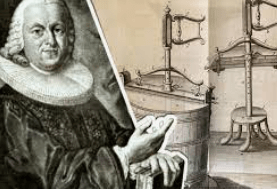
How the aerospace industry uses silicone
There is no margin for error in the aerospace industry. Given the environment in which aeroplanes operate, all components must be made from high-performing and reliable materials.
In particular, the fluctuation in temperature from the heat on the ground to freezing temperatures at high altitude means that materials must be able to withstand these changes without being compromised.
Safety is a major issue in the aerospace industry. All European aircraft are subject to airworthiness tests by the European Union Aviation Safety Agency and all components are strictly analysed.
World leader
Silicone is one of the materials that can be relied upon in these extreme circumstances. It is widely used within the industry in seals and gaskets, amongst a range of other components. The UK is a world leader in silicone moulding and its companies have a long and proud history in the aerospace industry. Many examples of providers can be found online, such as https://www.meadex.co.uk/materials/silicone/#moulding.
These companies provide components using silicone. This may not be obvious to the eye; however, silicone plays a crucial role in keeping planes in the air and passenger and crew safe.
Silicone gaskets around doors and windows keep them airtight and help to maintain cabin pressure. In the engines, you will find silicone in the gaskets used within the propulsion units to maintain liquids at the correct pressure. The material’s ability to survive high temperatures without degrading makes it ideal for use in these engines.
Instruments
In recent years, the cockpits of aircraft have become increasingly high-tech. The printed circuits essential to the safe running of the aircraft can be sensitive to extremes of pressure and temperature; however, sealing the units in silicone reduces the risk.
Cockpit instruments displaying crucial information for the crew also need to be protected. Everyone who has flown in an aircraft is familiar with the vibrations felt at high speed, at take-off and landing, and also when flying through turbulence. Silicone coating helps to cushion the instruments and protect them from vibration damage.
As far as passengers are concerned, they are surrounded by silicone in the infotainment systems, the LED lighting, and the air vents. They will also come into contact with silicone components every time they open or close the overhead lockers.
Thanks to UK silicone companies, passengers and crew continue to fly safely around the world.







